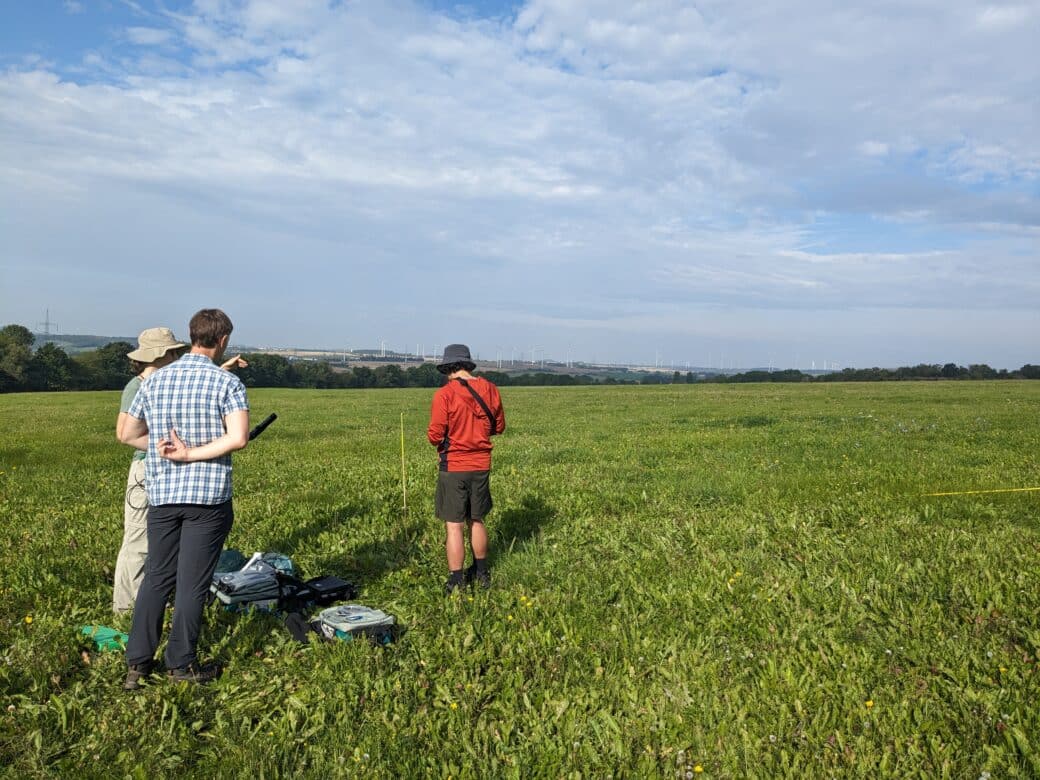Evaluation of current remote sensing-based sensors and methods for quality analysis of FFH grassland habitat types

With the SeBAS project, we aim to link remote sensing data with site-based ecological field data to analyze the effects of land use intensity on the relationships between biological diversity – ecosystem functions – and ecosystem services at different spatial scales. In particular, we want to record plant diversity not only taxonomically but also functionally by measuring the functional properties of the plants. In the spring and fall 2020 and 2021 field campaigns, additional grassland attributes were collected, such as aboveground biomass, phenology and non-destructive measurements using a field spectroradiometer, a leaf area index device and a climbing plate meter.
In two further field campaigns in 2023, particular attention will be paid to recording the intraspecific variability of plant functional traits.
Since high-resolution information in time and space can be obtained with the help of satellite data, the SensGrün project aims to support grassland monitoring for nature conservation to investigate what statements can be made with certainty about plant substance content, biochemical, physiological and structural traits and the associated species composition. The focus is on the new hyperspectral satellite EnMAP because it provides additional information compared to the multispectral data from Sentinel-2, for example. In order to validate statements from the EnMAP data, we want to compare the data with field data. In addition, measurements of other spatial scales (hand instruments, drones) and spectral resolutions (Sentinel-2) are used for validation.
The common goal of SensGrün and the Biodiversity Exploratories is to investigate the potential and synergies of hyperspectral data from the EnMAP satellite as well as data from the Sentinel-1 & 2 satellites for the investigation of quality-related parameters in grassland. The aim is to determine which quality features can be reliably identified using remote sensing. The satellite data is compared with drone and field spectrometer data to estimate economies of scale. This builds on the work of the SEBAS project.
For this purpose, data on the following parameters should be recorded:
- Multi- and hyperspectral signatures of different grassland types (hand-held measuring devices and drones)
- Biomass (Rising Plate)
- LAI
The subject of the cooperation agreement is to explore the potential of hyperspectral and other current satellite data for the quality analysis of grassland. These are compared with handheld device and drone data. This will create new remote sensing data sets (handheld devices, drones, etc.) for the Biodiversity Exploratories as well as insights for area-wide grassland monitoring using satellites and drone data.
To achieve this, the partners initially plan to carry out the following work:
- First non-destructive (hyper)spectral, LAI and biomass measurements with hand-held devices (Sep. 2023)
- Non-destructive hyperspectral, LAI and biomass measurements with handheld devices as well as multispectral and hyperspectral measurements with drones (1-2 dates per growing season 2024, 2025)
- Analysis of the grassland parameters recorded in the SEBAS project as well as other data (e.g. use, species) in connection with hyperspectral and multispectral data
- Method development with traditional regression methods and machine learning
- Evaluating spatial scale effects through different sensor resolutions
- Evaluate spectral scale effects (multispectral / hyperspectral)
- Validate with past data









